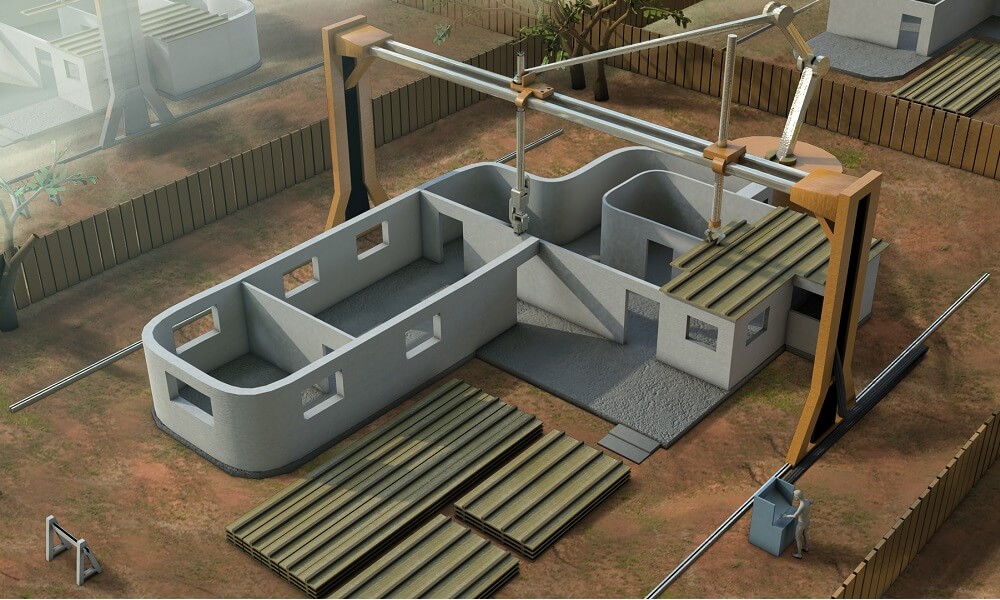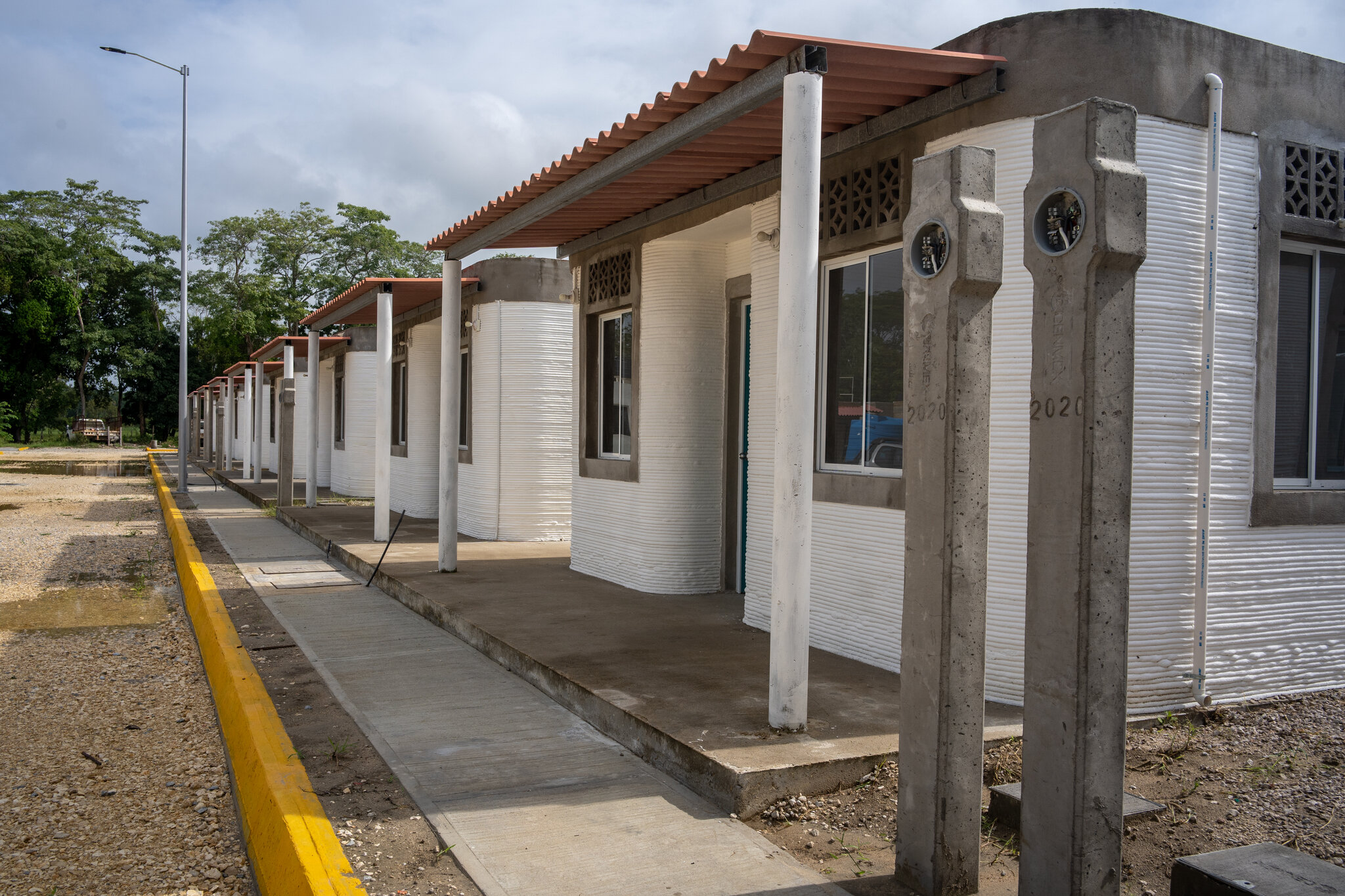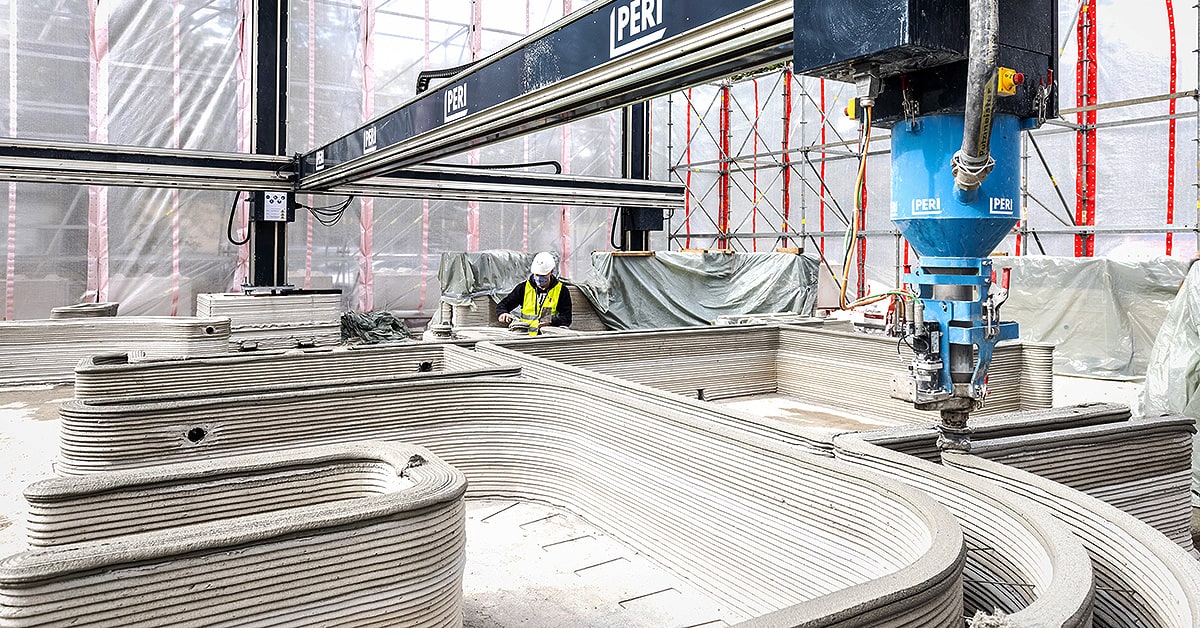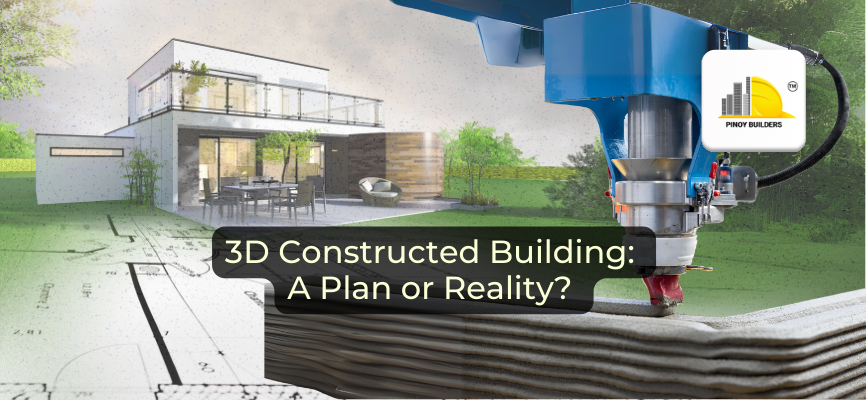The concept of 3D-printed buildings has captured the imagination of innovators and industry professionals alike. With its potential to drastically reduce construction time, costs, and environmental impact, 3D construction technology is hailed as a game-changer, standing as a promising solution that will revolutionize the construction industry. But is this technology still a futuristic plan, or is it becoming a present-day reality? In this article let’s explore the current state of 3D-constructed buildings and their implications for the future of construction.
Understanding 3D Construction Technology
3D construction technology involves the use of large-scale 3D printers capable of creating building components layer by layer. This technology makes use of materials such as concrete, plastics, or composite mixtures, as well as more unexplored materials like geo polymers, fiber, and sand.

Image from Sculpteo
The 3D printed method contrasts with traditional construction techniques, offering more of an automated and precise approach, unlike customary practices in the industry. Key components of 3D construction include advanced machinery like robotic arms and specialized nozzles, which extrude the construction material to form the building’s structure.
Latest Innovations in 3D Construction
3D construction is seeing some exciting advancements in 2024, transforming the way we build. Significant advancements in 3D construction technology include the development of new composite materials that offer enhanced durability and sustainability and the refinement of printing techniques that allow for more complex and larger structures.
Notable projects that highlight these advancements include the 3D-printed office building in Dubai, which was completed in 2016 and remains a landmark example of what 3D technology can achieve.

Image from ArchDaily
Another example is the ongoing construction of the first 3D-printed neighborhood in Tabasco, Mexico, aimed at providing affordable housing solutions.

Image from The New York Times
In March 2024, the construction of a 27-foot tall, more than 100 ft. wide 3D-printed building named House of Phoenix marked a significant milestone in the field. This structure showcased the capabilities of modern 3D printing technology, demonstrating the potential for creating sizable and complex buildings efficiently.

Image from Bloomberg
Benefits of 3D-Constructed Buildings
One of the most significant benefits of 3D-constructed buildings is the efficiency and speed of construction. On average, traditional construction projects take months and even years to complete. With 3D printing construction, project timeframes can be drastically reduced.

Image from Omrania
In addition to a streamlined project timeline, 3D construction can be more cost-effective, minimizing labor costs and material waste that are normalized in traditional construction sites. The precision of 3D printing ensures that only the necessary amount of material is used, reducing the overall waste and contributing to environmental sustainability. Furthermore, 3D-printed buildings can be designed to incorporate sustainable features, such as energy-efficient structures and the use of eco-friendly materials.
Challenges and Limitations of 3D-Constructed Buildings
Despite the promising potential, 3D construction technology could still face several challenges and limitations. Technical issues are still a common concern, and the scalability of 3D printers and the quality control of printed materials are still significant hurdles that need to be addressed. Logistical challenges also arise in transporting and assembling the large-scale printers required for construction. Regulatory and safety concerns are another major barrier. Current building codes and regulations are not always compatible with 3D-printed structures, necessitating updates to ensure the safety and reliability of these buildings.
The Future of 3D Construction
As technical and regulatory challenges are addressed, the adoption of 3D printing is expected to accelerate. The technology’s ability to provide cost-effective, sustainable, and efficient building solutions positions it as a key player in the future of construction.
3D-constructed buildings represent a significant technological advancement with the potential to transform the construction industry. While there are challenges to overcome, the progress made thus far indicates that 3D-printed buildings are moving from a futuristic plan to a present-day reality. As the industry continues to innovate and adapt the technologies of the future, the impact of 3D construction technology is poised to grow, offering exciting possibilities for the future of building and construction.
References
Boissonneault, T. (2021, May 25). ICON presents bigger, faster Vulcan 3D printer & unveils House Zero. VoxelMatters. Retrieved July 5, 2024, from https://www.voxelmatters.com/icon-vulcan-3d-printer-house-zero-project/
Diaz, A. A., & Guide, S. (2024, January 29). New Trends in the Construction Industry, 2024 a year of Innovation. Letsbuild. Retrieved July 5, 2024, from https://www.letsbuild.com/blog/new-trends-in-the-construction-industry-2024-a-year-of-innovation
Tvasta. (2023, September 9). Challenges and Limitations of 3D Construction Printing. Tvasta. Retrieved July 5, 2024, from https://www.tvasta.construction/blogs/challenges-and-limitations-of-3d-construction-printing/










